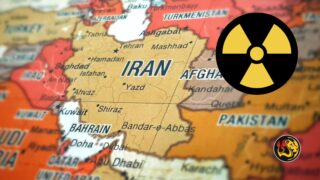Pentagon: U.S. and Israeli Strikes Set Back Iran’s Nuclear Program by Up to Two Years
by Worthy News Washington D.C. Bureau Staff

(Worthy News) – U.S. and Israeli military strikes on Iran’s nuclear infrastructure have delayed Tehran’s nuclear ambitions by up to two years, according to the Pentagon’s chief spokesperson, who briefed reporters Wednesday on the aftermath of the operation.
Speaking from the Pentagon, Defense Department spokesperson Sean Parnell said the coordinated operations — code-named Midnight Hammer (U.S.) and Rising Lion (Israel) — delivered a major blow to Iran’s uranium enrichment capabilities. “We assess that Iran’s nuclear program has been severely degraded, with their timeline to a potential nuclear weapon pushed back by one to two years,” Parnell said.
The campaign, launched in late June, targeted Iran’s most fortified nuclear sites, including Fordow, Natanz, and Isfahan. The U.S. assault featured precision airstrikes using B-2 stealth bombers armed with GBU-57 bunker-buster bombs. A U.S. submarine also launched cruise missiles at key infrastructure in Isfahan.
“All of the intelligence that we’ve seen suggests those facilities were completely obliterated,” said Parnell. “Iran is much further away today from a nuclear weapon than they were before the president took bold action to fulfill his promise to the American people — that Iran will not have a nuclear weapon.”
Despite the Pentagon’s optimistic appraisal, the exact extent of Iran’s remaining nuclear materials remains unclear. Iranian state media claimed that some highly enriched uranium had been moved to safety before the attacks, but those assertions have not been independently verified.
International Atomic Energy Agency (IAEA) Director General Rafael Grossi confirmed that while the enrichment sites sustained “a very serious level of damage,” some capacity remains. “They can have, in a matter of months, a few cascades of centrifuges spinning and producing enriched uranium,” Grossi said during an interview on Face the Nation. He also stressed that foreign inspectors must be allowed back into Iran to verify what capabilities remain — a prospect thrown into doubt after Tehran suspended cooperation with the IAEA last week.
The future trajectory of Iran’s nuclear ambitions remains murky. A March intelligence assessment led by Director of National Intelligence Tulsi Gabbard concluded that Iran was not actively pursuing a nuclear weapon and that Supreme Leader Ali Khamenei had not authorized such a program since halting it in 2003. However, President Donald Trump dismissed that finding in June, calling it “wrong,” and maintained that Iran had been weeks away from assembling a bomb.
CIA Director John Ratcliffe later backed the Pentagon’s conclusion, stating that “a body of credible intelligence indicates Iran’s nuclear program has been severely damaged by the recent, targeted strikes.”
Still, outside experts caution that Iran could recover faster than expected. Brent Sadler, senior fellow at the Heritage Foundation, said there remains “a high probability that some weapons-grade uranium is still in Iran and could be weaponized,” potentially allowing the regime to assemble up to eight nuclear warheads if it reconstitutes its weapons program.
Meanwhile, satellite imagery dated June 1 showed Iranian crews conducting excavation work at Fordow, suggesting an effort to salvage equipment or restore access to underground chambers damaged in the attacks.
Despite the military success, diplomatic efforts remain stalled. Vice President JD Vance confirmed that no direct talks with Iran have occurred since the strikes. “We are going to work in the coming weeks to ensure that we do something with that fuel,” he told ABC News, referencing Iran’s remaining uranium stockpile.
As the U.S. awaits clearer intelligence and the next steps from Tehran, Parnell emphasized America’s commitment to deterrence: “When America is strong and speaks clearly, the world is a better and more stable place.” Yet analysts warn that the regime could respond by developing a more secretive and harder-to-detect nuclear program.
“It’s possible Iran may shift to a darker, more opaque version of its nuclear enterprise,” said Naysan Rafati, senior Iran analyst at the International Crisis Group. “The question is not just what they can do, but what they intend to do next.”
💡 Did you know? One of the best ways you can support Worthy News is by simply leaving a comment and sharing this article.
📢 Social media algorithms push content further when there’s more engagement — so every 👍 like, 💬 comment, and 🔄 share helps more people discover the truth. 🙌
Latest Worthy News
If you are interested in articles produced by Worthy News, please check out our FREE sydication service available to churches or online Christian ministries. To find out more, visit Worthy Plugins.
